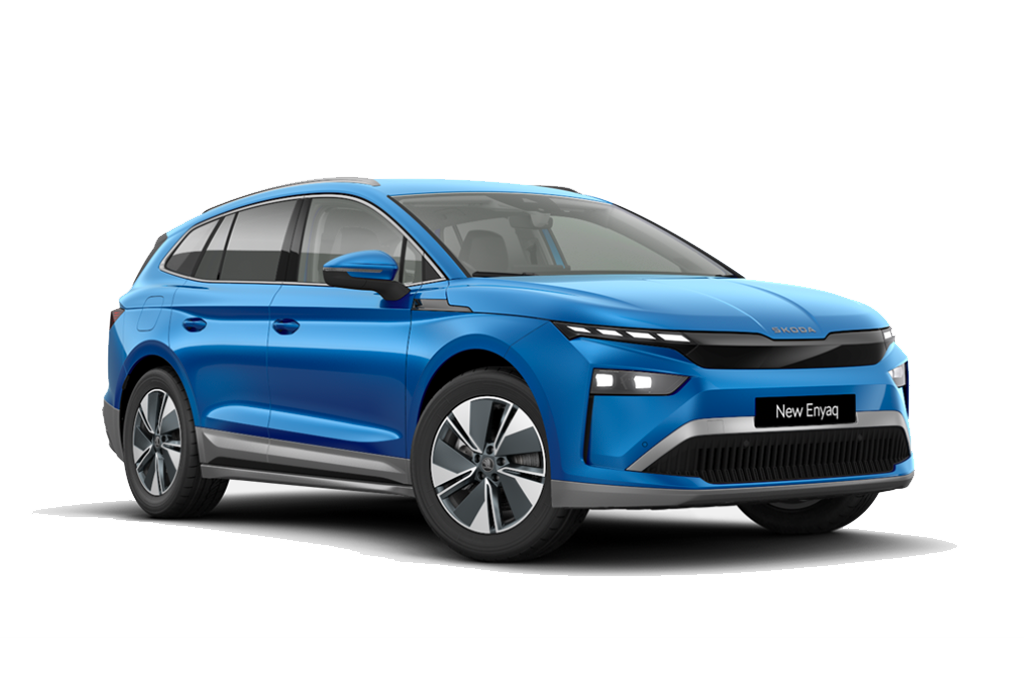Who on earth is Leapmotor, and what is the Leapmotor C10? Good questions. Leapmotor is a Chinese tech brand that was started up in 2015 and has sold hundreds of thousands of cars in China. It’s now coming to the UK and Europe with the Leapmotor C10, which is a big family SUV that’s nearly 4.9-metres long and gets a range of 263 miles. There’s no seven-seat option, it’s purely a five-seater, and it’s planning on getting your attention by having Tesla-style premium tech and driver experience but for a much more budget price. The C10 costs £36,500 and has everything on it including a panoramic sunroof, huge touchscreen, adaptive LED lights and more. We’ll go into more depth about the equipment, and what Leapmotor is offering to tempt you away from your Tesla, a bit further down the review.
For now, while this is a very unknown brand in the UK, it’s reassuring to know that Stellantis owns 51% of the company. Stellantis is the huge car maker that was formed when Peugeot, Citroen, Fiat and many other brands merged a few years ago, so it’s got serious car-making knowledge and European heritage, and it’s Stellantis that’s actually launching and selling Leapmotor vehicles in European markets.
Range, battery and charging
The C10 gets a 69.9kWh lithium-iron phosphate (LFP) battery that powers the rear wheels, for a WLTP combined range of 263 miles. That’s… alright. But not great, when you can get the (granted, rather more compact) Kia EV3 and Renault Scenic for a similar price with over 370 miles of range.
Charging is also middling-to-disappointing, with rapid charging speeds peaking at 84kW – substantially less than the charging speeds on most alternatives. The Tesla Model Y charges at nearly three times that rate, and the Skoda Enyaq at twice that rate. It means that the C10 will take around 40 minutes or more for a 10- to 80% DC rapid charge, despite being quite a modest battery size. A full charge at home from a 7kW charger will take around eleven- to twelve hours, and because the C10 can only accept up to 6.6 kW from your home wall box, those many rivals that charge at the normal 7.2kW will be able to get another 12 miles of driving from a typical five-hour charge at the cheap overnight tariff rates.
As for real-world range? Well, we managed at 4 miles per kWh when we were testing the C10 abroad in ideal temperatures of 20degC, but during our drive in the UK with temperatures of only around 9degC, we saw more like 3.2m/kWh, which will be good for only around 224 miles - despite the C10 having a standard heat pump to help with winter efficiency. It also gets vehicle-to-load tech, which is a really nice additional feature that you also get on rivals like the Hyundai Ioniq 5.
Practicality and boot space
The C10 is a big car compared to most of its rivals, with a length of 4,739mm meaning it’s longer than cars which are considered large in the class, such as the Nissan Ariya and Skoda Enyaq. You're getting a lot of car for the money, basically. That extra length is most evident in the rear seats, where there is limo-like levels of space for the passengers. The seat backs recline too, and if you get thrown out of the house after an argument then the whole interior can be configured into a (lumpy) bed.
There’s plenty of storage space in and around the dashboard too, and visibility from the driver’s seat is generally good, except for a small rear window which is blocked by huge headrests on the back seats.
The boot operation is electric, but unusually slow, meaning you’ll want to use the app to open it if you are approaching in the rain. It opens to reveal 435 litres of space with the seats up and unreclined. That’s big enough for most situations but is small for the class – even cars like the Nissan Qashqai and Toyota bZ4X can beat it. When the rear seats are down, the capacity increases up to 1,410 litres. There’s also a 32 litre frunk, and if you really want to go big, the roof bars will cope with loads of 100kg and the C10 can tow up to 1,500kg too.
Interior and technology
Leapmotor are very proud of the computer systems which run the C10’s software, claiming it offers all sorts of benefits. That’s all fine, but it doesn’t seem to translate into anything special when you are inside the car. There are big screens behind the steering wheel and in the centre of the dashboard, plus some and Tesla-like switchgear - but there’s no Apple CarPlay or Android Auto and the navigation is fairly rudimentary. If it used the Google-based system like a Volvo EX30 it would be more forgivable.
Additionally, the C10 is compatible with wireless charging for smartphones and features a high-quality, 12-speaker audio system. The system can receive OTA (Over-the-Air) updates, which allows the vehicle software to always stay up to date.
Also like Tesla are the locking options. You can use a mobile phone app, or a card which has to be placed on the phone charging pad between the seats.
The interior styling is generally very pleasant, although the all-black option is dull and the brown has the appearance of a pensioner who’s fresh out of a tanning booth.
While Leapmotor has clearly tried to make the materials feel ‘premium’, the rubbery surfaces are a little too rubbery, and leave your hands feeling as though they’ve got a residue on them, like they’ve been handling an inner tube or elastic band.
Leapmotor is also very proud of the C10’s soundproofing, which it claims offers greater refinement than the luxury brands. It’s certainly quiet on the move, unless you need to use the ventilation system, which is unusually noisy – especially if you need to de-mist the windows. Be prepared to shout if it’s damp out.
Motors, performance and handling
There is just one drivetrain option for the C10 in the UK – that’s a 215bhp single motor feeding the front wheels. It’s perfectly adequate for the task, giving a 0-62mph time of 7.5 seconds. You will have to fiddle around in the menus to find a setting you like though, and you’ll probably want to stick with it as it’s not the easiest to navigate. There are different options for both the power delivery, steering and braking. Annoyingly, you need to be stationary to select some of them.
The C10 gets a 215bhp electric motor that drives the rear wheels, which is good for a 0-62mph time of 7.5 seconds. Not bad for such a huge car, so performance isn’t an issue even if it’s not a patch on the Ford Mustang Mach-E and Tesla Model Y.
There are drive modes that you can toggle through via the screen, and they vary the brake regen’ as well, but none of the regen’ modes were very heavy and they all feel quite similar. The C10 will even freewheel with no regen’ at all in the right mode, which some may enjoy, and others may find a bit disconcerting as it can feel like the vehicle’s running away with you. There’s a one-pedal mode for around town, too.
It just okay to drive, really, the C10. Everything tightens up and feels a bit more keyed in if you select Sport mode, but it never feels like a sports-SUV. It’s very definitely a car that majors on refinement and comfort, so it feels quite heavy over big potholes and intrusions in the road, but is mostly very calm and serene – provided you’ve got the incessant driver assistance systems turned off, anyway. We like serene. An Enyaq is much nicer to drive, to be honest, but the C10 is confident and inoffensive.
Running costs, pricing and specs
The C10 is launching in the UK with just one version in the lineup, so no need to work out if you can afford to upgrade from the Popular Plus to the GLX. The price is £36,500 which means it’s the same price level as entry-level rivals from the likes of Skoda and Renault, which tend to be smaller. Despite this, the C10 also has more kit, a longer range and a four-year warranty which is better than the three years offered by some rivals – but notably behind the seven years from Kia and MG.
The equipment list includes the (very slow) electric tailgate, rear privacy glass, and ‘silicone leather’ which is ventilated and heated seats up front.
The lower price also means you will be taxed less as a company car driver as the levy is dictated by the list price, although the difference won’t be huge as the BIK rate is only 2% this year.
In terms of running costs, the C10 is comparatively efficient but the slow charging speeds mean you won’t be able to make as much use of cheaper overnight energy tariffs. A rival with 7.2kW capability will be able to take 3kWh more per five-hour charge, and the savings will add up even more if you have 22kW charging.
Verdict
The Leapmotor C10 needs a good reason for you to take the leap of faith into a brand you’ve never heard of. That reason could be the price and equipment tally, although we await the finance costs with interest.
It also has a huge amount of space for rear seat passengers. But it’s not exciting or even interesting to drive, and the technology needs a rethink in places. The charging speeds are off the pace too.
The C10 isn’t a bad car, it’s just one which will struggle to cut through to shortlists in a crowded market.
Like the Leapmotor C10? Try these...












.jpg?width=1500&height=1000)







